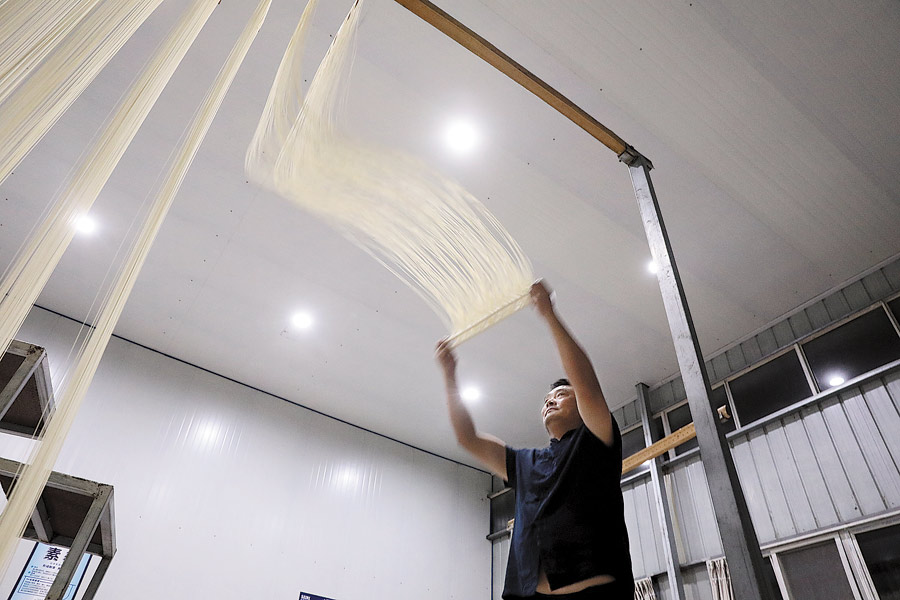

Liu Laiwang mass produces hollow noodles, contributing to rural vitalization, Yang Feiyue reports.
Huangchuan county, in Central China's Henan province, is covered with rice paddies, but the residents' favorite food is not made of rice. Rather, it is the Huangchuan hollow gongmian (tribute noodle), a distinctive dish that dates back to the Tang Dynasty (618-907).
The noodles are sweet and thin, cook quickly, do not get sticky in soup, and are famous for their hollow, tubelike shape.
"You can stick one in the water, blow into it, and bubbles come out," says Liu Laiwang, who has made a career out of making them, founding Wangxin Hollow Noodle Co in 2006.
Hollow gongmian are intimately connected with the culinary tastes of past imperial dynasties, as evidenced by the character gong in the name, which translates to "tribute".
Local chronicles compiled during the reign of Emperor Guangxu (1871-1908) of the Qing Dynasty (1644-1911) record that the county had been producing hollow tribute noodles for centuries by that point, and that their popularity had spread far and wide.
The noodle even made its way onto the tables of the banquet celebrating the 100th day of the Tang Empress Wu Zetian's rule, hard-won as she was the only female ruler in China's history.
It became a customary tribute offering to the royal family during the Song Dynasty (960-1279), later spreading and thriving among wider society.
In late February, the hollow noodle was featured in a large intangible cultural heritage exhibition held by Henan's provincial culture and tourism department and the Zhoukou municipal government. Participants got to see how the noodle is fashioned by craftsmen and taste it on site.
Liang Fengming, a noodle maker who works with Liu's company, explains to exhibition-goers their process: "To put it simply, we let the exterior of the noodle dry first, and then the wet internal part will stick to the dry outer part."
This was an oversimplification for laymen, hiding the copious, precise and exacting work behind the noodles' production.